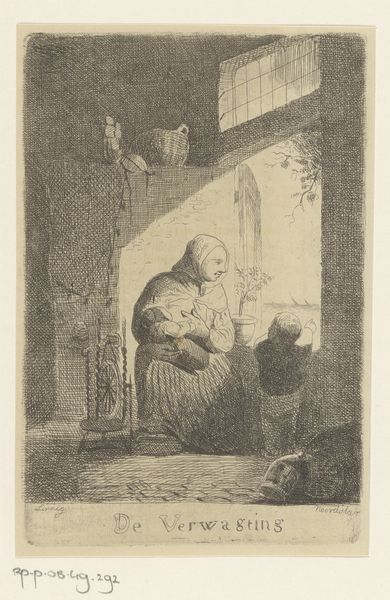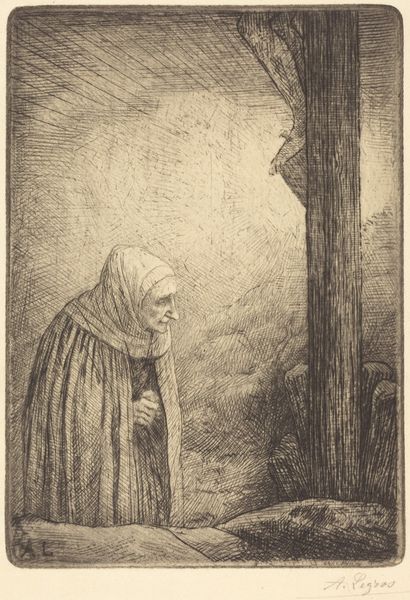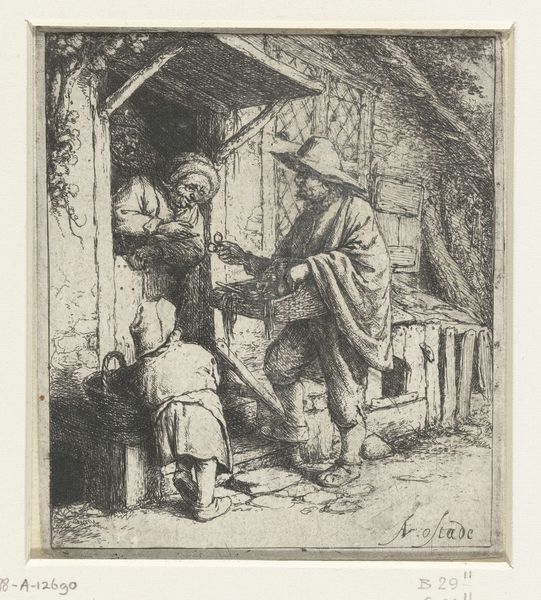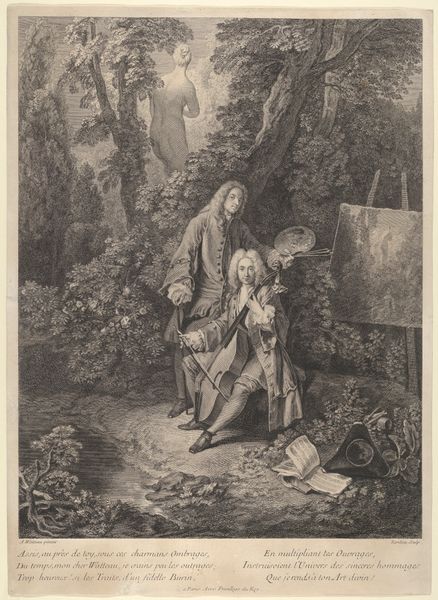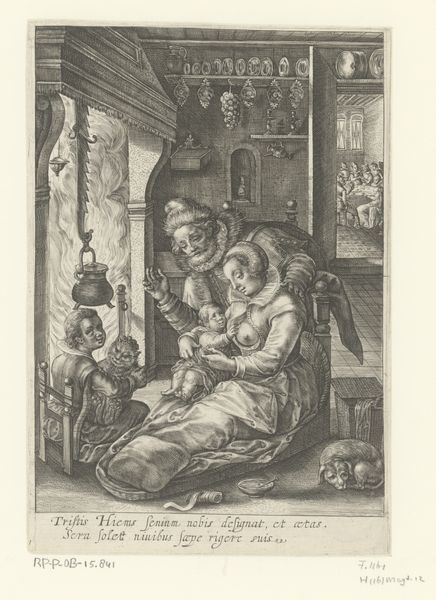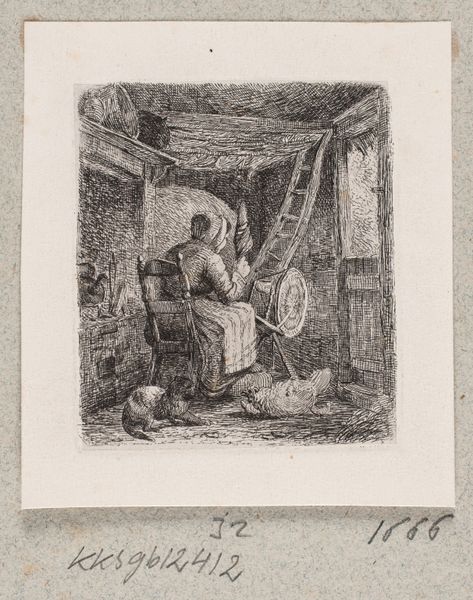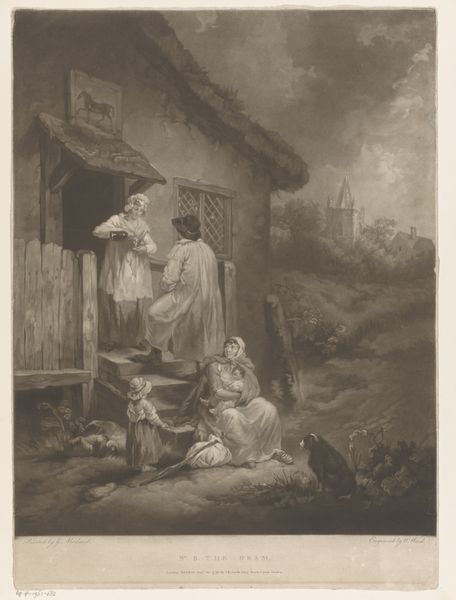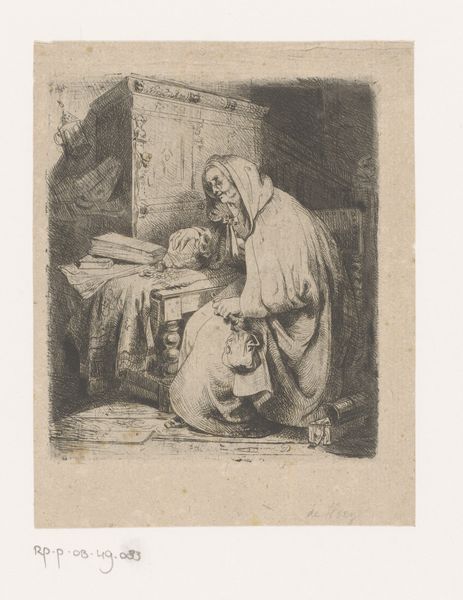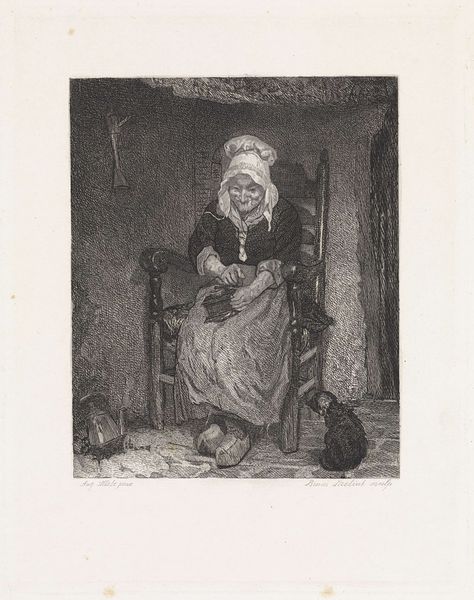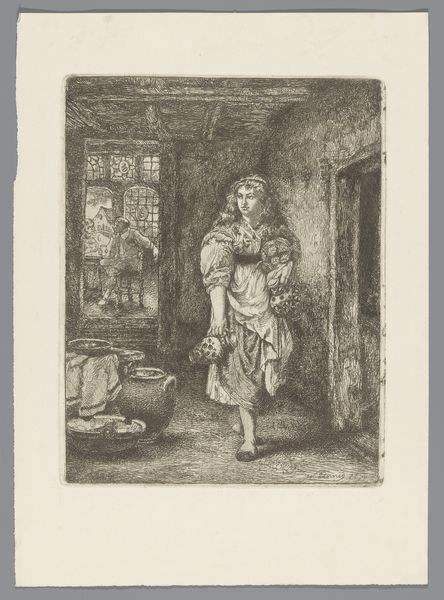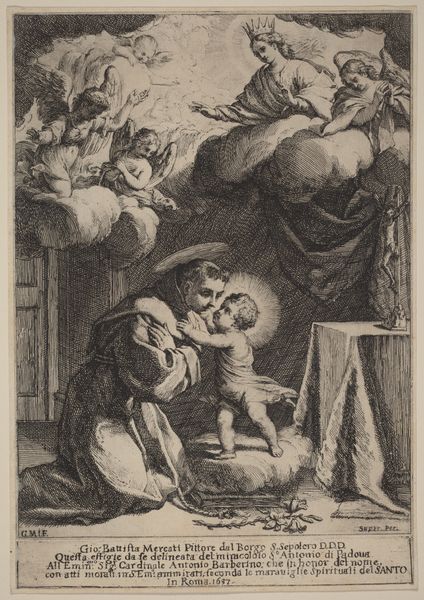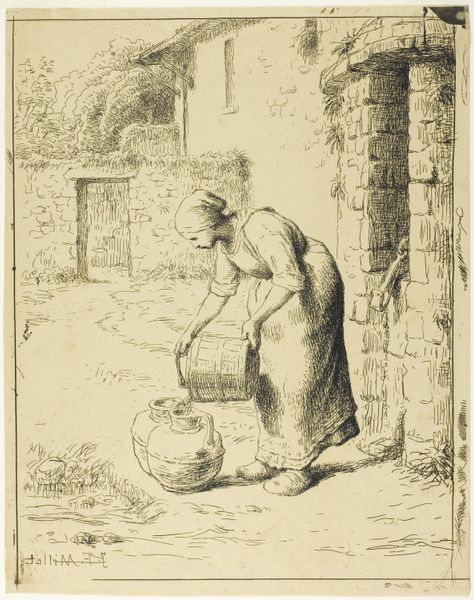
print, etching
#
portrait
#
narrative-art
# print
#
etching
#
old engraving style
#
figuration
#
romanticism
#
genre-painting
#
realism
Dimensions: height 159 mm, width 107 mm
Copyright: Rijks Museum: Open Domain
Editor: We’re looking at Willem Linnig's 1842 etching, "Mother Feeding Her Baby." It's got a cozy, domestic feel. What visual elements strike you most when you look at this piece? Curator: Initially, the dramatic interplay of light and shadow commands attention. Note how Linnig uses dense hatching to define the interior space and throws into relief the figures against the brightly lit window. This opposition of light and dark structures our gaze, guiding it from the background objects to the mother. The composition exhibits a carefully calibrated tension, wouldn't you agree? Editor: Yes, the contrast does draw the eye. And the textures! All the tiny lines create so much depth. Is there a symbolic dimension in the use of line or form, or is it purely aesthetic? Curator: Function always determines form, as Sullivan teaches us, though that's another century. Here, Linnig creates contrasts between horizontals and verticals which divide and organize the composition, stabilizing the scene and contributing to its domestic tranquility. This piece is remarkable not only for what it depicts but how it depicts it. The materiality of the etched line itself becomes a form, a key part of the aesthetic experience. What do you notice? Editor: It seems that by analyzing these qualities alone, we can uncover so much meaning in a piece! Curator: Indeed, attending to an artwork's internal mechanics will attune us to its communicative potentials.
Comments
No comments
Be the first to comment and join the conversation on the ultimate creative platform.
